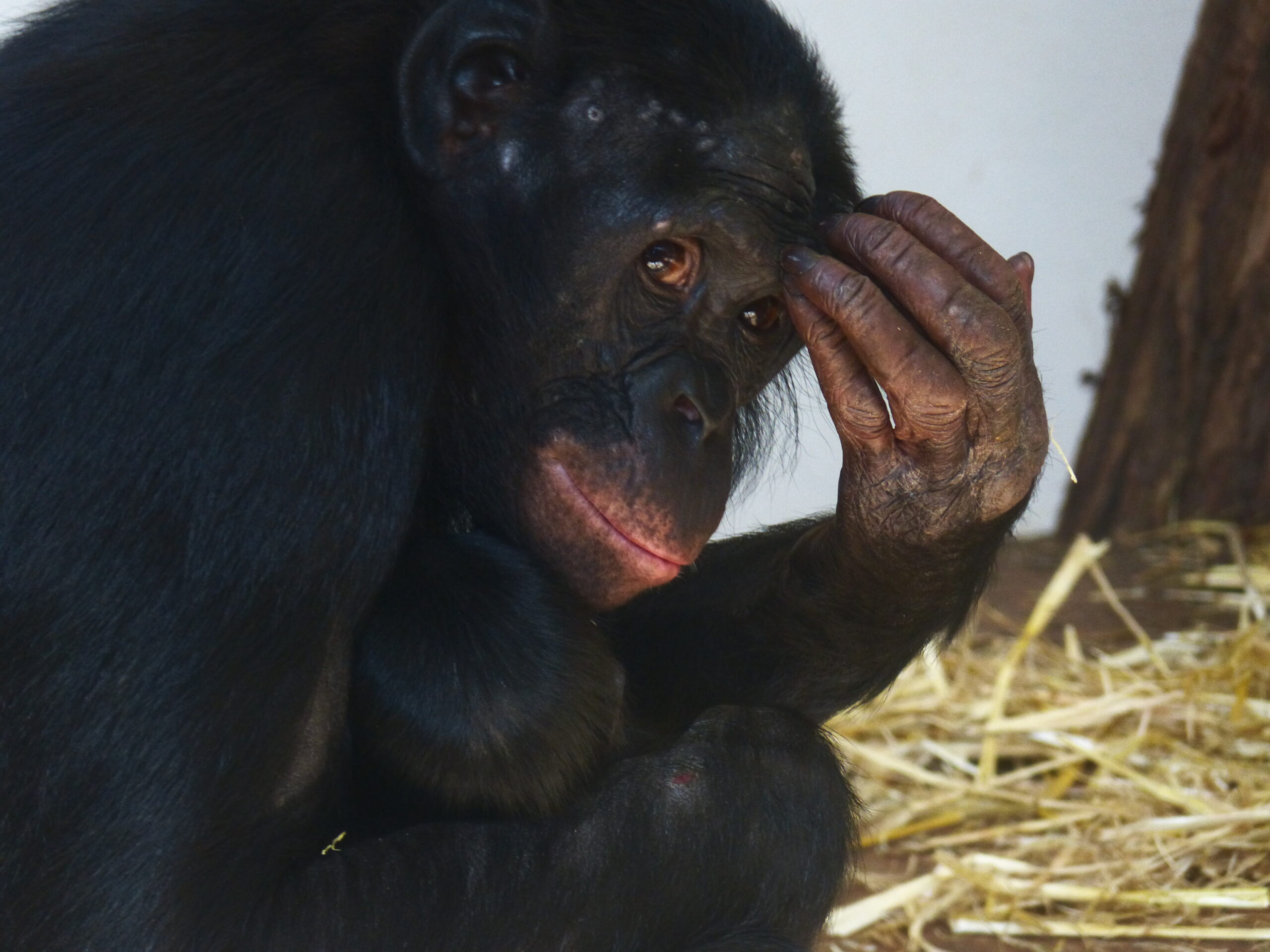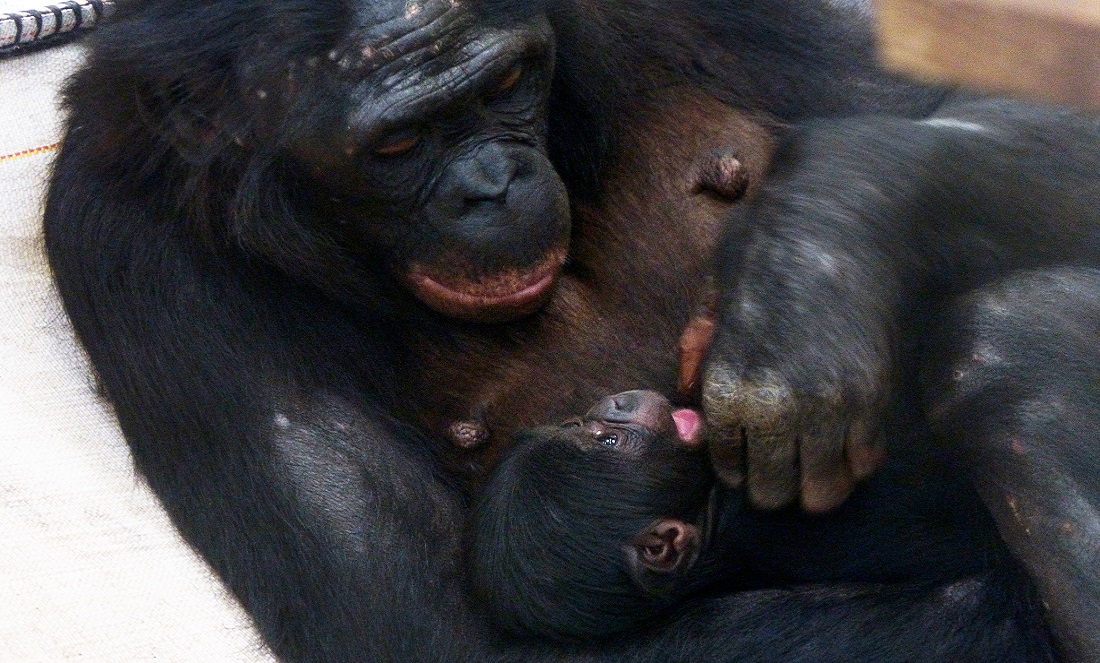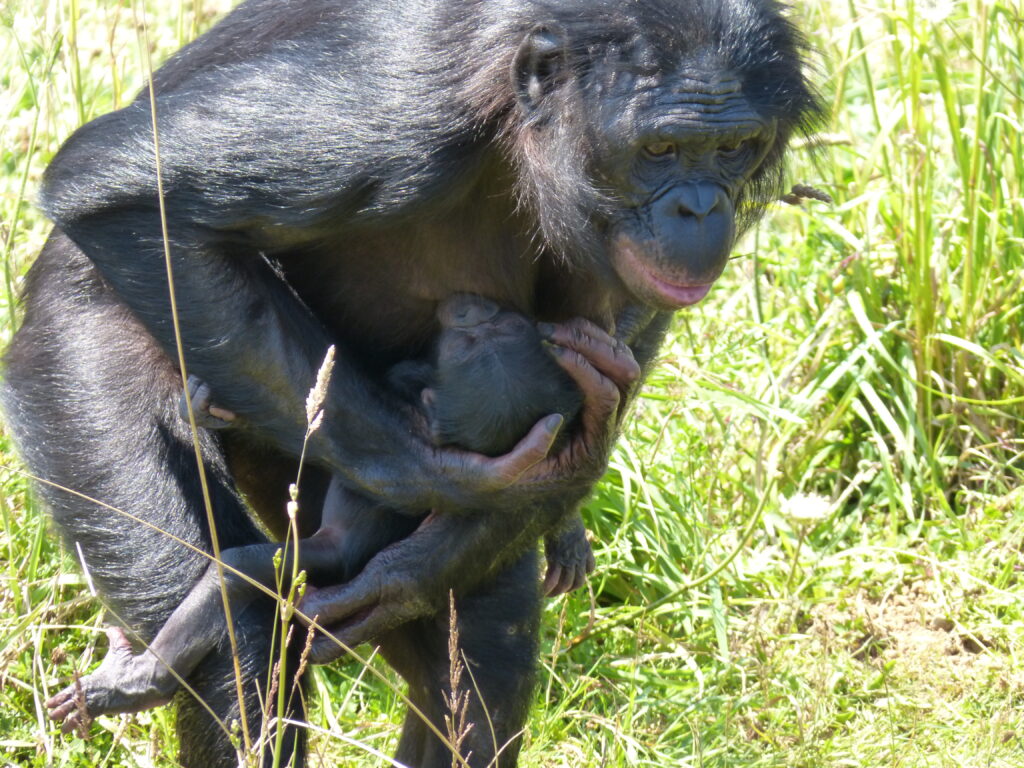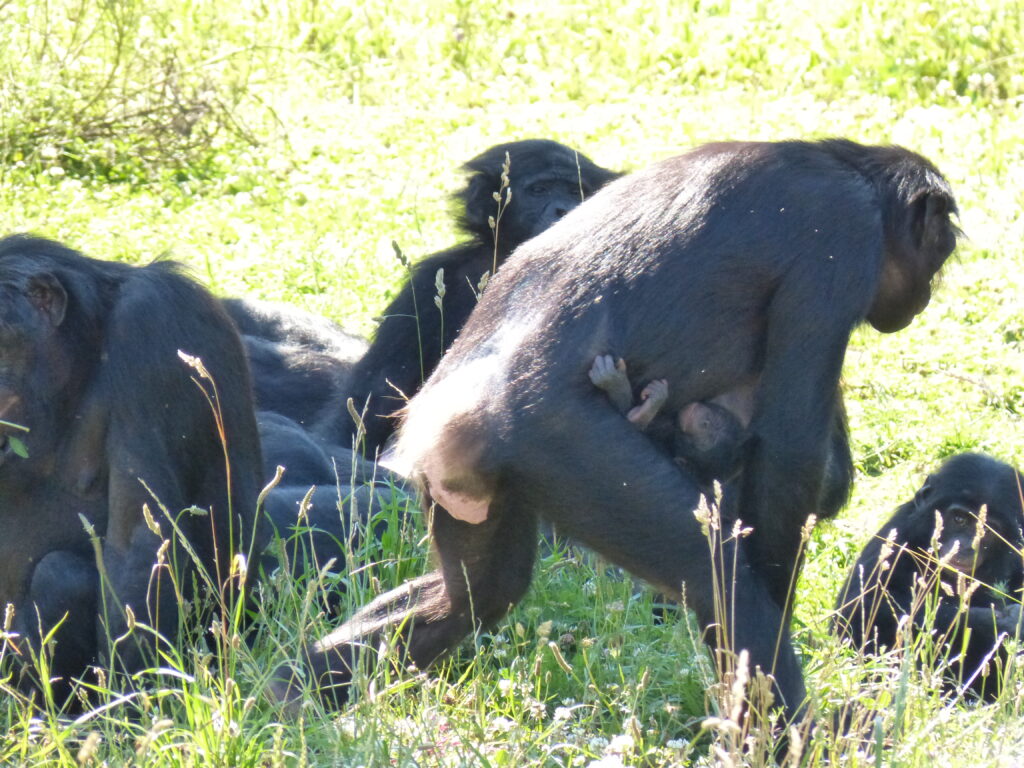Humans are unique among mammals or any other species in many ways. For example, we are the only species known to cook food, use fire, wear clothes or use such complex language.
We are also unique in that we tend to our births. In humans, giving birth is a difficult and risky task, so when mum is ready to give birth, company is usually nearby. No other species, not even among our closest relatives chimpanzees and bonobos, are known to help mothers-to-be give birth. That is until now.
A new study found, for the first time, evidence that bonobos also share this human trait of accompanying mums-to-be during labour.
A lucky find
Bonobos’ births are difficult to observe, as they usually happen at night, so the discovery of this new behaviour occurred by pure chance, says Elisa Demuru, first author of the study.
“I was collecting behavioural data on other topics—I was staying several months in each park—and I had the chance to be there for the deliveries and to film them. I was very lucky!” she says.
Starting in 2009, Elisa recorded three births at two European primate parks. In all three cases, the females were not isolated but were accompanied by the other females of their group, with the dominant females being on the first line.
“These females stayed near the mother, followed her, protected her by keeping males away, and some of them even performed gestures aimed at holding the baby during birth,” Elisa said.
A paradigm shift
These findings challenge our current knowledge about birth in non-human primates.
“The main result of this study is that birth attendance is present in a species other than humans and that it is provided by females,” Elisa says.
An important fact about bonobos is that females don’t actually need any help in giving birth. They are perfectly able to do it on their own, Elisa explains. Mothers just seem to prefer the company of other females during their difficult task. This might be related to the bonobos’ peculiar social behaviour.
“Females are strongly bonded, even if they are not kin, and they really form strong alliances and support each other. I think this sociality explains the social dynamics I observed during the deliveries,” Elisa says.
Such social bonds are unlikely to be found in our other close relatives the chimpanzees.
“In chimpanzees, females are far more solitary, and they tend to isolate themselves as birth approaches, probably also to avoid the risk of infanticide , which has been observed in chimps but never in bonobos,” she adds.

Now Elisa plans to do more research to understand the social interactions that occur during primate births—which is no easy task.
“You need to know things like social bonding, hierarchy, kinship among all group members to try to explain what you observed during the delivery, and this requires long-term observations,” Elisa says.
But her results so far do show one thing: humans and bonobos are not so different from each other after all.











